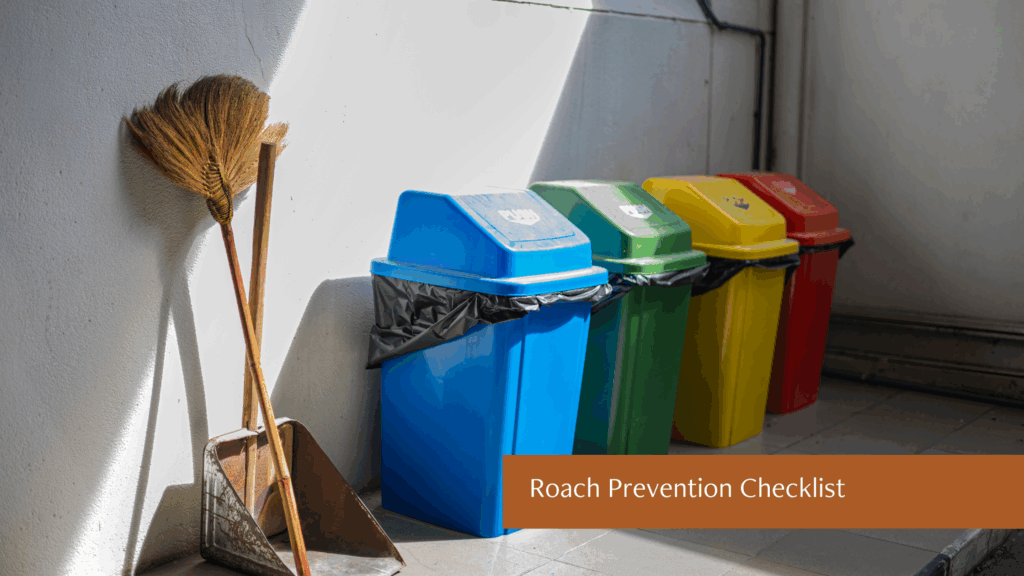Roach Eggs at Home? Here’s How to Stop Them
Finding a single cockroach is unsettling, but discovering roach eggs signals a much bigger problem. One egg case can produce dozens of new roaches, quickly turning a minor issue into a full-blown infestation. Tackling the problem at its source—the eggs—is the most effective way to protect your home. Understanding how to identify and eliminate these resilient egg casings is your first line of defense.
How to Identify Roach Eggs
What you’re looking for isn’t a single egg, but a case called an ootheca. This is a hardened, protective capsule that contains multiple eggs. The appearance of these roach eggs varies by species:
- German Cockroach: Their oothecae are light brown, slender, and about 1/4 inch long. A female carries this case with her until just before the nymphs are ready to hatch, often depositing it in a hidden, secure location.
- American Cockroach: These egg cases are larger, dark reddish-brown or black, and have a slightly swollen appearance. Females deposit them in warm, humid, and concealed areas shortly after they are formed.
- Oriental Cockroach: Similar to American roach oothecae, these are dark brown to black but are often slightly larger and puffier. They are also placed in sheltered spots.
Spotting an ootheca is a clear sign of an active, reproducing roach population in your home.
Where Do Roaches Hide Their Eggs?
Cockroaches are strategic about where they lay their eggs, choosing locations that are dark, warm, and undisturbed. This protects the developing nymphs from threats and provides them immediate access to food and water upon hatching.
Common hiding spots for roach eggs include:
- Kitchens: Behind and under appliances like refrigerators, stoves, and dishwashers. Inside cabinets, drawers, and pantries, especially in the back corners.
- Bathrooms: Beneath sinks, behind toilets, inside vanities, and near plumbing pipes.
- Furniture & Clutter: In the joints of wooden furniture, within cardboard boxes, and amongst stacks of paper or magazines.
- Cracks & Crevices: Along baseboards, inside wall voids, and around window and door frames.
How to Stop Roach Eggs: A Step-by-Step Guide
Eliminating roaches requires a multi-faceted approach that targets both adult insects and their egg cases.
- Sanitation is Key: Roaches thrive on crumbs, grease, and moisture. Clean your kitchen thoroughly every day, wiping down counters, sweeping floors, and storing all food in airtight containers. Fix leaky pipes and dry up any standing water.
- Seal Entry Points: Inspect your home’s exterior and interior for cracks and gaps. Use caulk to seal openings around pipes, baseboards, windows, and electrical outlets to deny roaches entry and hiding places.
- Find and Destroy the Oothecae: Use a flashlight to inspect the common hiding spots listed above. When you find roach eggs, vacuum them up immediately. Afterward, seal the vacuum bag in a plastic bag and dispose of it in an outdoor trash can. You can also crush the ootheca or drop it into a container of soapy water.
- Use Targeted Treatments:
- Insect Growth Regulators (IGRs): These products don’t kill roaches directly but disrupt their life cycle, preventing nymphs from maturing and sterilizing adults.
- Bait Gels & Stations: Place baits near areas where you’ve seen roach activity. Adults consume the poison and carry it back to their hiding spots, affecting others.
- Desiccant Dusts: Products like boric acid or diatomaceous earth can be applied as a very thin layer in dry, inaccessible areas like wall voids and under appliances. These dusts abrade the roach’s exoskeleton, causing dehydration. Safety Note: Keep all baits, gels, and dusts out of reach of children and pets. Always read and follow label instructions carefully.
When to Call a Professional
If you continue to see roaches or find new roach eggs despite your best efforts, it’s time to call for professional help. Signs of a large infestation include seeing roaches during the day, noticing a musty odor, or finding droppings that resemble black pepper.
Roach Prevention Checklist
- Clean up spills and crumbs immediately.
- Store food, including pet food, in sealed containers.
- Empty trash cans daily and keep them covered.
- Fix all water leaks promptly.
- Seal cracks and holes in walls, floors, and foundations.
- Reduce clutter, especially cardboard and paper.
- Regularly inspect dark, undisturbed areas for signs of roaches or their eggs.

Take Control of Your Home
Finding roach eggs is a clear call to action. By being proactive and thorough, you can break the reproductive cycle and reclaim your space. A clean home is a less inviting home for pests. Don’t let a small problem grow into an overwhelming one.If you’re facing a persistent roach problem, don’t wait. A professional can provide the expertise and tools needed for complete eradication. Contact us today to schedule an inspection and get a customized treatment plan.
